Animals that start with p: list with pictures and facts. Discover amazing animals beginning with p, including two famous bears, an extremely strange egg-laying mammal, and a well-known type of flightless bird!
***
Animals That Start With P: Pictures & Facts
On this page you’ll find a list of amazing animals beginning with p, together with pictures and interesting facts about each animal. Below many of the animals are links that you can follow for further information, pictures and videos.
Included in this list are individual species (e.g. polar bear) and well-known groups of species (e.g. penguins) whose names begin with P. The scientific name and conservation status are provided for each of the individual species.
Discover animals beginning with ...
- Main list page: Animals A to Z
- Become an animal expert: Animals: The Ultimate Guide To The Animal Kingdom
List of Animals Beginning With P
Panda
- Scientific Name: Ailuropoda melanoleuca
- Conservation Status: Vulnerable
No list of animals that start with p would be complete without a panda! The panda (also known as the giant panda) is a species of bear found in China. Unlike other bears, the panda is almost entirely herbivorous (plant-eating). 99% of its diet consists of bamboo.
The panda’s round face is due to powerful jaw muscles, which are needed to cope with the tough bamboo stalks. The panda also has special thumb-like bones in its paws for holding bamboo.
- You can find out more about pandas here: Panda Facts
Pangolin
Pangolins are small to medium-sized mammals whose bodies are heavily armored with tough scales. There are eight species of pangolin; four are found in Asia, and four in Africa.
When threatened, pangolins curl themselves up into a ball, and may even spray a foul-smelling chemical at their attacker.
Pangolins mainly eat ants and termites, and have long tongues for capturing their small insect prey.
Parrot
Parrots are birds characterized by colorful plumage, powerful hooked bills, and feet with two forward-pointing and two rear-pointing toes. Most are found in tropical and subtropical regions.
Parrots make up a group of birds known as Psittaciformes. Within this group are several smaller groups, including macaws, budgerigars, cockatoos and New Zealand parrots.
Peccary
Peccaries are pig-like animals found in the Americas. There are three species of peccary: the collared peccary, white-lipped peccary and the Chacoan peccary. A recently-discovered fourth species, called the giant peccary, has not yet been confirmed.
Penguin
Penguins are flightless birds who have evolved to ‘fly’ underwater rather than in the air. All but one species of penguin (the Galápagos penguin) are found in the Southern Hemisphere, and most live in cold climates. Several species live on or around the continent of Antarctica.
- Discover more about these amazing birds: Penguin Facts
Peregrine Falcon
- Scientific Name: Falco peregrinus
- Conservation Status: Least Concern
The peregrine falcon is the world’s fastest-moving animal. When diving it can reach speeds of 320 km/h (200 mph). The peregrine falcon’s diet consists mainly of other birds, which the peregrine captures in a high-speed dive.
Pictus Cat
- Scientific Name: Pimelodus pictus
- Conservation Status: Unassessed
The pictus cat is a small catfish found in the Amazon and Orinoco river systems. It grows to around 12 cm (5 in) and has a silver-blue body with black spots. The pictus cat is a popular aquarium fish.
Pika
Pikas are small rodent-like mammals in the family Ochotonidae. They are related to rabbits and hares, and are in the order Lagomorpha, along with their larger cousins.
Thirty species of pika are currently recognized. Two, the American pika and the collared pika, are found in North America; the other 28 species are found in Asia.
Piranha
Piranhas are freshwater fish found in rivers and lakes in South America. Armed with large teeth and powerful jaws, piranhas are fearsome predators, although they are often themselves the prey of other animals such as caimans.
Piranhas occasionally attack humans, but this usually results in nothing more than minor cuts to the hands or feet.
- Find out more about piranhas here: Piranha Facts
Platypus
- Scientific Name: Ornithorhynchus anatinus
- Conservation Status: Near Threatened
The platypus is one of nature’s strangest animals. Not only does this semiaquatic mammal have a rather bizarre appearance, with the bill of a duck and the tail of a beaver, but it is a monotreme – in other words, an egg-laying mammal.
The platypus is only found in the wild in Australia.
- Discover more about this weird and wonderful Australian animal: Platypus Facts
Poison Dart Frog
Poison dart frogs are a family of frogs found in Central and South America. Most poison dart frogs are brightly colored. This warning coloration tells potential predators that the frogs are poisonous.
Members of South American tribes dip the points of their darts in the poisons present in the frogs’ skin. It is this practice that gives the frogs their name.
- You can read more about poison dart frogs here: Poison Dart Frog Facts
Polar Bear
- Scientific Name: Ursus maritimus
- Conservation Status: Vulnerable
The polar bear is the largest species of bear (the Kodiak bear, a brown bear subspecies, is a similar size, but on average brown bears are smaller). The polar bear is also the most carnivorous of bears, with a diet consisting mainly of seals.
The polar bear is found in the Arctic, and spends most of its life on the sea ice.
- Find out more about the polar bear here: Polar Bear Facts
Polecat (European)
- Scientific Name: Mustela putorius
- Conservation Status: Least Concern
The European polecat is a member of the weasel family, Mustelidae. It is found throughout Europe and in parts of North Africa. The polecat is a predator, and hunts small animals such as rodents and birds. It marks its territory with a foul-smelling secretion.
The European polecat is the wild ancestor of the ferret.
Porbeagle
- Scientific Name: Lamna nasus
- Conservation Status: Vulnerable
The porbeagle is a species of shark found in cold waters in both the Northern and Southern Hemispheres. It grows to around 2.5 m (8.2 ft.) in length and preys mainly on fish.
The porbeagle rarely, if ever, attacks humans.
Porcupine
Porcupines are large rodents with coats of sharp quills. A porcupine’s quilled coat provides protection from predators. The quills are hardened hairs.
There are two main groups of porcupines: New World porcupines (from the continents of North and South America) and Old World porcupines (from the continents of Europe, Asia and Africa). Despite both groups having spines, they are not closely related to one another.
Portuguese Man O’ War
- Scientific Name: Physalia physalis
- Conservation Status: Unassessed
The Portuguese man o' war is not a single animal: it is a colony of animals, each of which has a particular job to do and cannot survive alone.
The Portuguese man o’ war is found in the Atlantic, Indian, and Pacific Oceans. Its tentacles can deliver a painful sting.
Prairie Rattlesnake
- Scientific Name: Crotalus viridis
- Conservation Status: Least Concern
The prairie rattlesnake is a venomous snake found in North America. It lives in a variety of habitats, including prairies, woodlands and dry, rocky areas. It spends most of its life on the ground, but may also climb into trees and shrubs.
When threatened, the prairie rattlesnake vibrates its tail, producing a rattling sound.
- Discover more about this North American reptile: Prairie Rattlesnake
Proboscis Monkey
- Scientific Name: Nasalis larvatus
- Conservation Status: Endangered
The proboscis monkey is an endangered rainforest monkey found on the island of Borneo. Males have distinctive, large, bulb-like noses.
The proboscis monkey lives by rivers and is a skilled swimmer. It has partially webbed feet to help it propel itself through the water.
- You can find out more about this strange-looking primate here: Proboscis Monkey Facts
Puffin (Atlantic)
- Scientific Name: Fratercula arctica
- Conservation Status: Vulnerable
The Atlantic puffin is a medium-sized black and white seabird with orange legs and a distinctive multi-colored bill. It spends most of its life at sea, only coming on land to breed.
The puffin is a member of the auk family, Alcidae. Its population is declining, and the species’ conservation status was recently updated to Vulnerable.
Pygmy Hippo
- Scientific Name: Choeropsis liberiensis
- Conservation Status: Endangered
The pygmy hippo is the common hippopotamuses’ little cousin, weighing only a quarter of the larger animal. It is found in rainforests in West Africa.
Although a semiaquatic animal that is reliant on water, the pygmy hippo spends less time in the water than the common hippo.
- Find out more about this reclusive African mammal: Pygmy Hippo Facts
Animals That Start With P: Conclusion
We hope that you've discovered some awesome new animals beginning with p on this page. Continue your exploration of the animal kingdom by checking out the following pages:

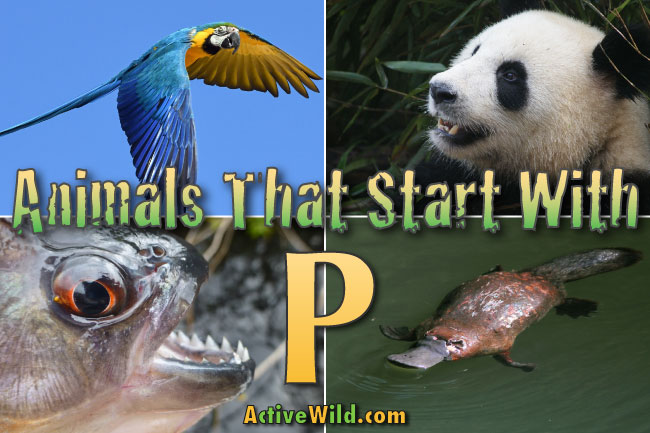




























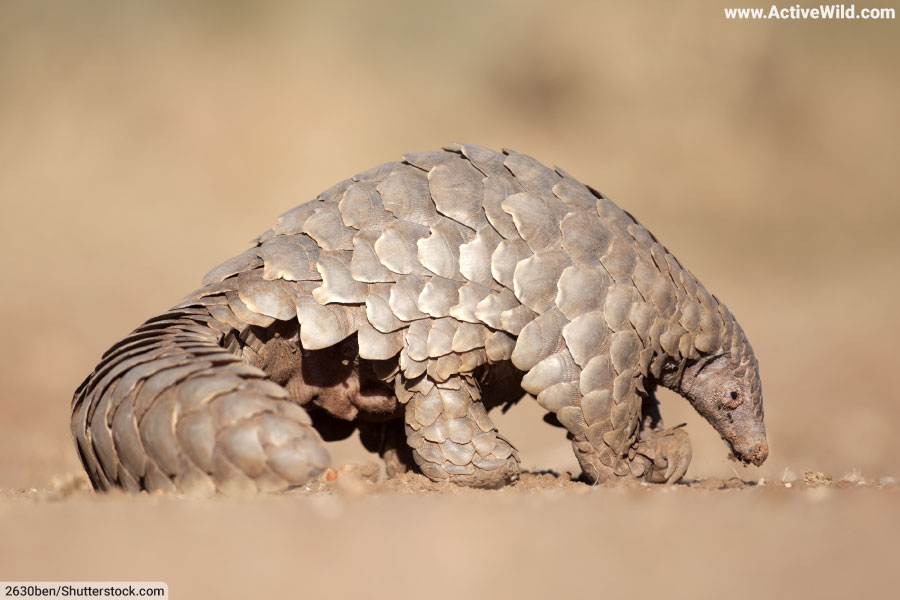
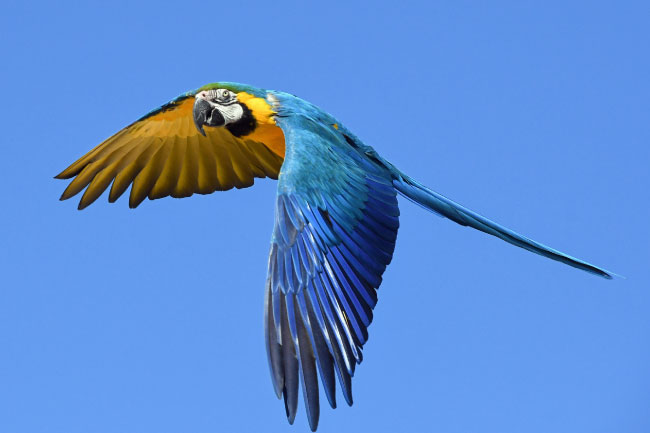
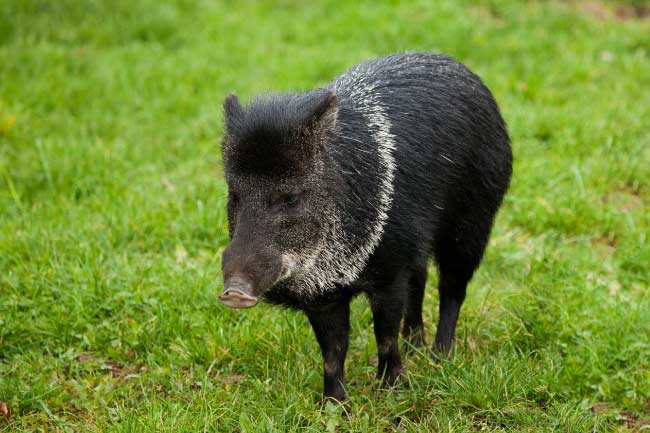
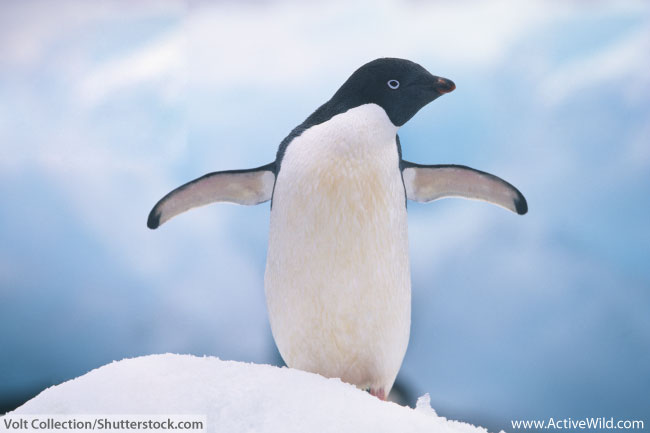
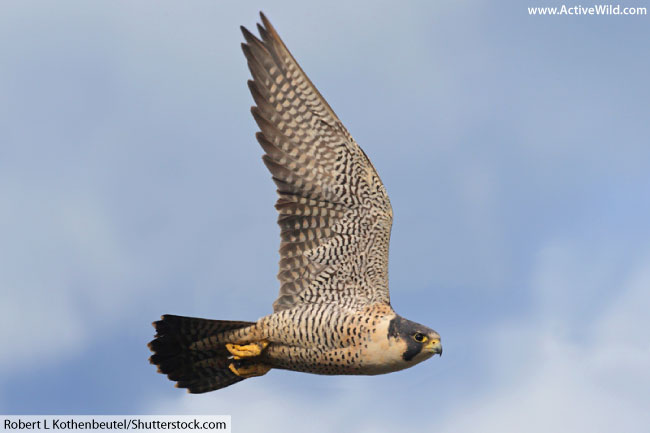


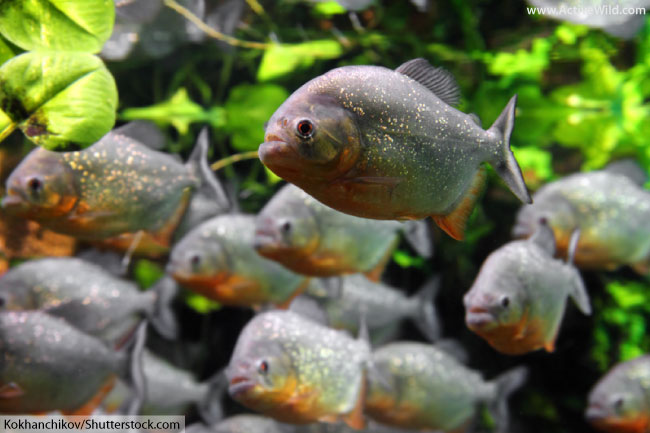
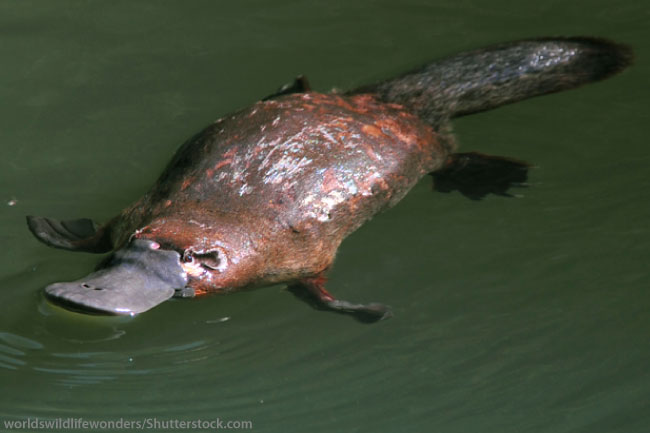
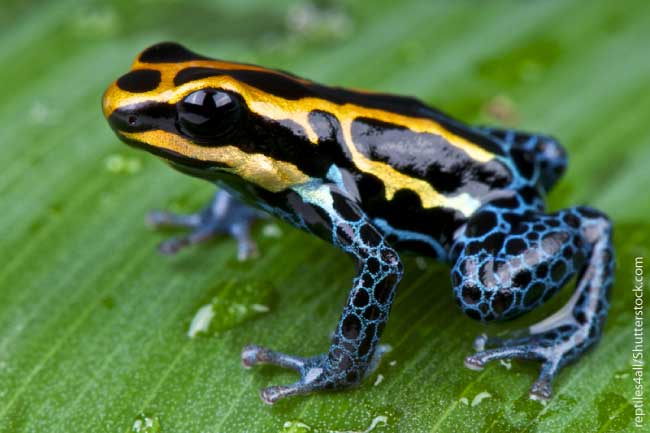
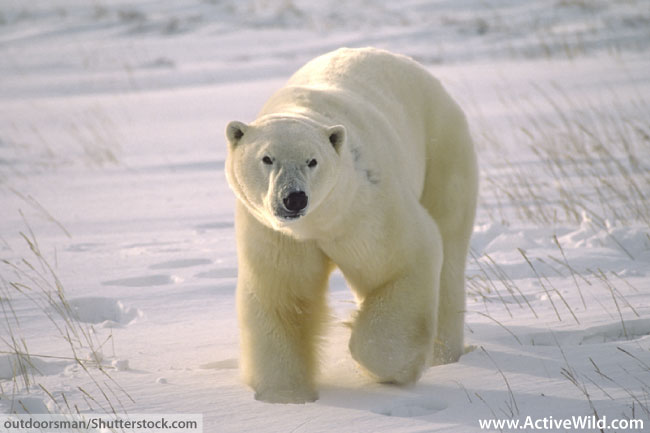




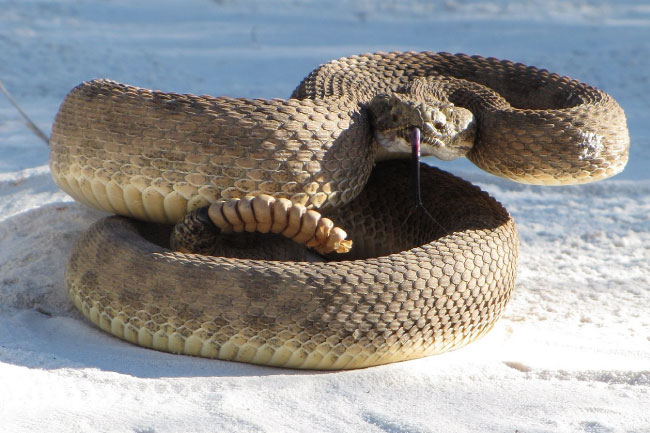
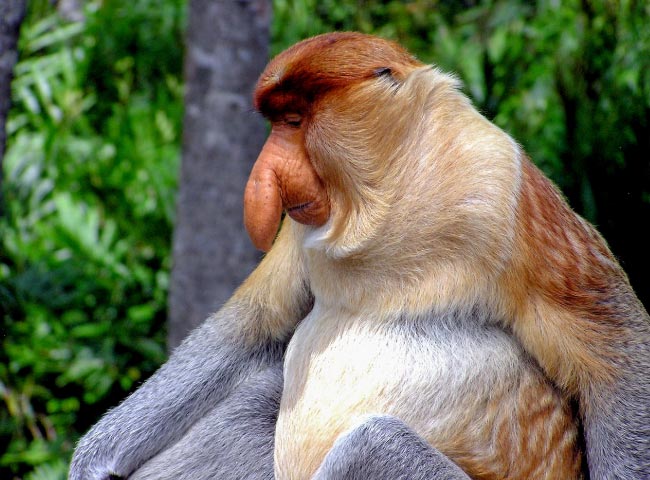
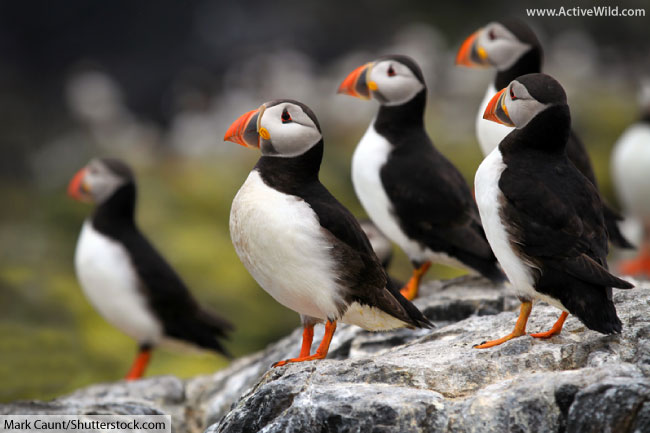
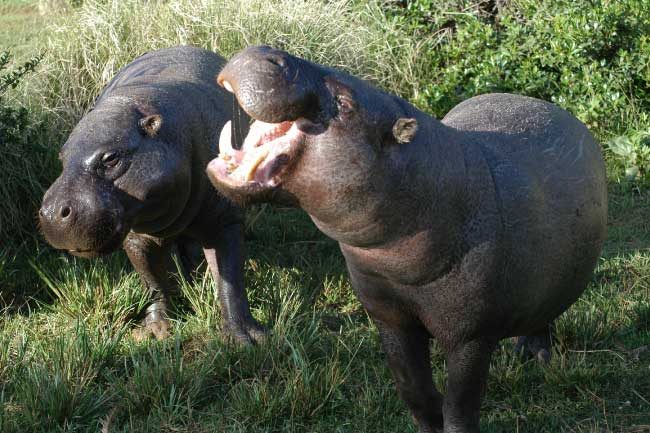
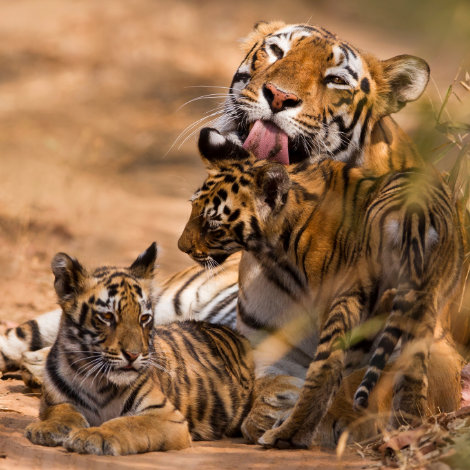
There is no peacock
There is also no peacock butterfly
No pink fairy armadillo